 Dr. Hugh Willoughby, of Florida International University, was one of the first meteorologists to ever fly into the eye of a hurricane. Now the job is done by the Hurricane Hunters—a team of pilots, navigators and meteorologists who fly into these dangerous storms to help keep us safe. Here’s what I learned when I interviewed Hugh Willoughby: What is a hurricane eye? Hurricanes are circular storms so the wind blows around in a circle. The eye is the center of a hurricane. If a circular storm doesn’t have an eye, it is not a hurricane—it’s a tropical storm. The eye is surrounded by a ring of clouds called the eyewall. Within the eye, there is a calm area that is cloudless all the way up to space. The winds are strongest just at the inner edge of the eyewall, which is composed of violent thunderstorms with strong updrafts and downdrafts. The hurricane pinwheels out from the eyewall as spiral bands of wind and rain, which stretch for miles. When a hurricane’s eye passes over land, the storm suddenly stops and the sun comes out. But the relief is short-lived as the other side of the storm soon slams into the area. How do Hurricane Hunters help us? Hurricane Hunters fly into the eye of hurricanes that are heading towards our shores to help predict where the storm will make landfall. On every mission they must find the center of the storm at least twice and at most four times over a period of several hours because the change in position of the center of the eye tells us the direction the storm is moving and how fast it is moving. They also drop packages called dropsondes that contain measuring instruments for air pressure, humidity, and wind speed at the eyewall. These measurements tell us the destructive power of the storm or its “category.” During a hurricane season (from June 1 to November 30) the Hurricane Hunters and their fleet of ten airplanes can get data on three storms, twice a day. So flying into a hurricane’s eye is pretty routine for them. Is it dangerous? The planes can easily handle changes in air pressure and wind speeds that create “bumps” and it can be pretty bumpy going through the eyewall. But, in more than sixty years there have been only four accidents. All on board agree that the view of the eyewall from inside the eye is worth it! The plane has transported them inside nature’s most magnificent amphitheater. (c) Vicki Cobb 2014 Harvey and Irma have alerted everyone to the dangers of a hurricane. We can predict the course of a hurricane by flying into a hurricane and repeatedly measuring wind speed, humidity, air pressure, and temperature. Here's a video that will give you a taste of what it looks like as you approach an eye wall. It is filmed from a plane penetrating Hurricane Katrina.
MLA 8 Citation Cobb, Vicki. "Flying into the Eye of a Storm." Nonfiction Minute, iNK Think Tank, 18 Sept. 2017, www.nonfictionminute.org/the-nonfiction-minute/ flying-into-the-eye-of-a-storm.
2 Comments
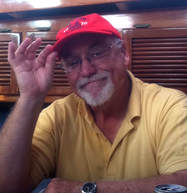 Most disasters are a cascade: small failures and minor circumstances, one leading to another, blossom into a cataclysm. On January 16, 1919, a cascade of tremendous size was poised above Boston’s North End. The weather was one factor: unusually warm for winter. Purity Distilling Company fermented and distilled molasses to make rum and alcohol. The 18th Amendment to the United States Constitution, prohibiting sales of alcoholic beverages, was due to be passed the very next day. This may have prompted Purity to collect as much molasses as possible. The enormous tank holding the molasses was about 50 feet tall and 90 feet in diameter, holding 2,300,000 gallons. It was poorly built of thin steel painted brown to hide its leaks. Local families often collected some of the dripping molasses to sweeten their food. The unseasonably warm temperature quickly rose from 2° F (-16.7° C) to 40° F (4.4° C), expanding the liquid, and natural fermentation produced CO2 increasing tank pressure. Just after noon, North End families felt the ground shake and heard a sound like a machine gun— the tank’s rivets popping out. The big tank exploded, sending a 25-foot wall of molasses roaring down the hill toward Commercial Street at about 35 miles an hour. In front of the molasses went a blast of air that blew some folks off their porches and tumbled others along the street like rag dolls. Homes and buildings were destroyed, smashed from their foundations. Horses pulling wagons were swept away. The steel girders of the Boston Elevated Railway were buckled, knocking a rail-car off the tracks. Twenty-one people were killed and more than a hundred were injured. Many were saved by Massachusetts Maritime Academy cadets who rushed off their docked training vessel and plunged into the brown goo to rescue people. It’s difficult to know how many dogs, cats and horses died. As you can imagine, the clean-up was awful. Firehoses from hydrants and harbor fireboats washed away as much as possible. Boston Harbor was brown for months. Sightseers tracked the goo back to homes, into hotels, onto pay-phones and onto doorknobs. Everything Bostonians touched was sticky for months. Some say that on a hot summer day along the North End’s docks, the sickly sweet smell of molasses lingers. Bostonians can smile at the Great Molasses Flood now, but in January of 1919, that cascade of disasters was deadly serious. Jan Adkins is an author, an illustrator, and a superb storyteller. Read about him on his Amazon page. He is also a member of iNK's Authors on Call and is available for classroom programs through Field Trip Zoom, a terrific technology that requires only a computer, wifi, and a webcam. Click here to find out more. MLA 8 Citation
Adkins, Jan. "The Great Boston Molasses Flood: How Can a Tragedy Sound Funny?" Nonfiction Minute, iNK Think Tank, 19 Jan. 2018, www.nonfictionminute.org/the-nonfiction-minute/ The-Great-Boston-Molasses-Flood-How-Can-a-Tragedy-Sound-Funny? 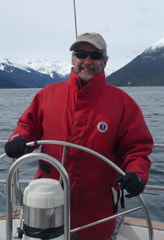 Early in 1980, Mt. St. Helens in southwestern Washington state began showing signs that it was about to erupt. Part of the state’s Cascade Range, the mountain was an active volcano that had been dormant for 123 years. The possibility of seeing the “fireworks” prompted many people to head for the mountain. The sightseers included Ron and Barbara Seibold and their two children, who parked about 12 miles north of the mountain. That was well beyond two danger zones that scientists had established. En route to the mountain, the children—Kevin, aged 7, and his 9-year-old sister Michelle—made a cassette tape. They asked questions and the parents answered. “They were goofing around—asking whether or not they would see lava coming out of the mountain,” said a state emergency management official. “One asked if it was dangerous, and both parents cheerfully reassured their kids that they’d be safe.” They weren’t. Exploding on May 18 with a fury far beyond what scientists had expected, the blast generated the largest landslide in U.S. history and flattened millions of trees. Uncounted tons of ash rose as high as 15 miles into the atmosphere. The Seibolds never had a chance. Ash almost instantly buried their vehicle. They suffocated. The eruption claimed 53 more people, making it the deadliest-ever on the US mainland. One was Harry Truman, who had run the inn at nearby Spirit Lake for more than 50 years. Truman had become somewhat of a folk hero for his refusal to move despite the danger. Twenty-year-old newlyweds Christy and John Killian were camping nine miles from the volcano. Christy died of massive head injuries, her arm around her pet poodle. John and the couple’s retriever were never found. Terry Crall and Karen Varner, both 21, died when a tree fell onto their tent, 14 miles away. Four people outside the tent were unharmed. So were researchers Keith and Dorothy Stoffel, flying a small airplane less than 1,300 feet above the summit at the moment of the eruption. A cloud laced with lightning bolts billowed toward them. They managed to outrun it. Today, much of the vegetation destroyed by the blast has returned. But the mountain—once compared in its graceful contours to Mt. Fuji in Japan—lost 1,300 feet of its height. Its former symmetrical cone shape is now topped by a horseshoe-shaped crater which stands as a mute reminder of the catastrophic eruption. 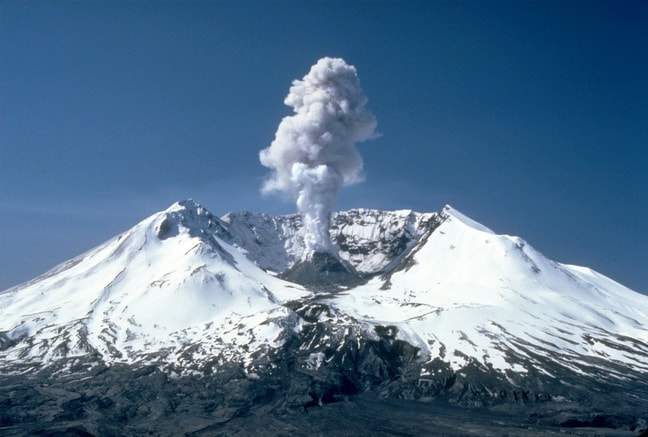 The top of Mount St. Helens two years after the eruption. The removal of the north side of the mountain reduced St. Helens' height by about 1,300 feet and left a crater 1 mile to 2 miles wide and a half mile deep. The eruption killed 57 people, nearly 7,000 big game animals (deer, elk, and bear), and an estimated 12 million fish from a hatchery. It destroyed or extensively damaged more than 200 homes, 185 miles of highway, and 15 miles of railways. 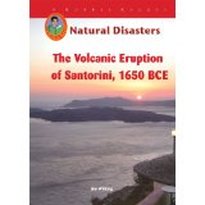 Volcanoes have been erupting for all of recorded history. More than 3,500 years ago, people on the Greek island of Calliste had a very good life. There was only one problem: Calliste was actually a volcano. Around 1650 BCE, the volcano erupted, blowing out the center of the island and creating a large bay. What was left of Calliste was buried under a thick layer of volcanic ash. Though the island was deserted for many years, people eventually returned. Several centuries ago, it was renamed Santorini. The island has reclaimed its beauty and allure, but the volcano below continues to reshape this little plot of land in the Mediterranean Sea. For more information on Jim Whiting's book on the Santorini eruption, click here. MLA 8 Citation
Whiting, Jim. "The Deadly Eruption of Mount St. Helens." Nonfiction Minute, iNK Think Tank, 5 June 2018, www.nonfictionminute.org/the-nonfiction-minute/ The-Deadly-Eruption-of-Mount-St-Helens. 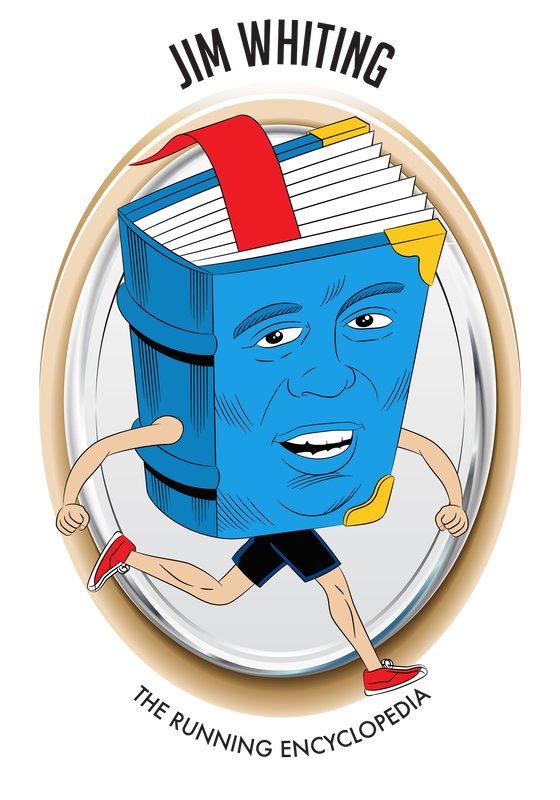 In the early morning of April 15, 1912, the ocean liner Titanic sank on her maiden voyage after hitting an iceberg. The ship carried just over 2,200 people. More than 1,500 perished. The main reason for the high death toll was that the ship had only 20 lifeboats. As they pulled away from the sinking ship, many were only half-full or even less. Even if all had been filled to capacity, only half the people would have been saved. Why didn’t Titanic carry enough lifeboats for everyone on board? There were several reasons. Titanic’s original design called for 64 lifeboats. That number was later cut in half, then nearly halved again. The ship’s owners felt that too many lifeboats would clutter the deck and obscure the First Class passengers’ views. The ship sailed under safety regulations that originated nearly 20 years earlier, when the largest passenger ships weighed 10,000 tons. Titanic was more than four times that amount. Yet officials maintained that ships had become much safer. Revising the regulations was therefore unnecessary. Under those regulations, Titanic actually had four more lifeboats than she was obligated to carry. Nearly every other vessel of that era was similarly deficient in the quantity of lifeboats. The prevailing thinking at that time was that the ship itself would serve as a gigantic lifeboat. Nearly everyone believed that even a heavily damaged vessel would remain afloat for many hours before sinking. That would allow plenty of time for the lifeboats to go back and forth several times, ferrying passengers to nearby ships. This assumption was not unreasonable. When the smaller liner Republic was involved in a collision in 1909, she remained afloat for more than 24 hours. All 742 passengers and crew were ferried to safety. The flaw with this assumption was that Titanic sank far more rapidly than anyone anticipated. The first rescue ship arrived more than two hours after Titanic had gone down. In 2012 an explosive document emerged. It consisted of safety inspector Maurice Clarke’s handwritten notes, urging the addition of 10 more lifeboats five hours before the ship sailed. The ship’s owners wanted to leave on time. Clarke was threatened with being fired unless he kept his mouth shut. If the owners had followed his advice, almost 700 more people might have survived. The disaster prompted a massive overhaul of regulations. All ships were required to carry enough lifeboats for everyone.  Frederick Douglass was a slave, but from an early age, he was determined to become a free man. He escaped to the North when he was about 20. A few years later, he discovered that he was an outstanding public speaker. For the rest of his life, Frederick would courageously speak out about the issues that affected his fellow blacks. Sometimes his actions placed him in great danger. During his lifetime no other African American did as much for blacks as Frederick Douglass. Even today his memory continues to inspire many people to work for civil rights and racial justice. For more information on Jim Whiting's book, click here. MLA 8 Citation
Whiting, Jim. "Titanic - Not Enough Lifeboats." Nonfiction Minute, iNK Think Tank, 31 May 2018, www.nonfictionminute.org/the-nonfiction-minute/ Titanic-Not-Enough-Lifeboats. 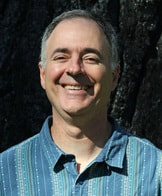 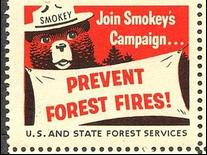 Only you can prevent forest fires! At least that’s what Smokey Bear taught me growing up. His message? All forest fires are bad, and we’re helping nature by putting them all out. Recently, I met a scientist who’s made me rethink this negative message about natural wildfires. His name is Dick Hutto and he’s a biology professor at the University of Montana. “There are two kinds of fires,” Dick explains. “The ones that burn down your house or kill your neighbor are bad, bad, bad. The other ones can be the greatest things in the world.” To prove his point, Dick took me to the Black Mountain burn area, near my home in Missoula, Montana. A severe forest fire burned through this area only ten years ago, and thousands of blackened trees still stand like sentries across the landscape. Surprisingly, this charred landscape explodes with life. Tens of thousands of new tree saplings reach for the sky. Elk and deer graze on the fresh grass growing in the newly-opened areas. More than anything, the songs of birds fill the burned forest. In his research, in fact, Dick discovered that dozens of bird species love fresh burn areas. In the West, 15 bird species prefer burned forests to all other habitats! Woodpeckers pave the way. As soon as a forest burns, legions of wood-boring beetles descend on the forest and lay their eggs in the dead trees. Three-toed, Hairy, and Black-backed Woodpeckers follow and begin devouring the newly-hatched beetle grubs. They also chisel out their own nest holes—holes that are used by Mountain Bluebirds, American Robins, Black-capped Chickadees, and many other species. Because of burned forests, these birds find food and shelter. They also find safety. How? Green forests abound with squirrels and chipmunks—animals that feast on bird eggs. A severe forest fire, though, clears out the small mammals. That means that birds can raise their young much more safely. But listen, don’t take my word for it—or even Dick Hutto’s. To learn more about the benefits of fire, throw a water bottle, lunch, a bird guide, and a pair of binoculars in your backpack and go visit a burn area for yourself. You will be astonished by what you see. Take a notebook or a camera along, too. Part of the fun of discovering our planet is sharing what you see. By doing so you’ll help others realize the importance of natural wildfires and burned forest—and help create a healthier, more interesting world. 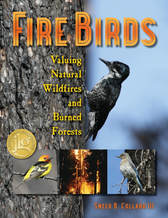 Sneed Collard III has written a book about the birds that thrive in burn areas. Fire Birds shows how dozens of bird species not only survive, but actually thrive in burned areas, depending on burns to create a unique and essential habitat that cannot be generated any other way. If you would like more information, click here to go to Sneed's website. If you click the Study Guide tab, you will find a guide that's been prepared for this book. MLA 8 Citation Collard, Sneed B., III. Weblog post. Nonfiction Minute, iNK Think Tank, 11 Oct. 2017, www.nonfictionminute.org/the-nonfiction-minute/rethinking-smokey-bears-message. |
*NEWS
|
For Vicki Cobb's BLOG (nonfiction book reviews, info on education, more), click here: Vicki's Blog
The NCSS-CBC Notable Social Studies Committee is pleased to inform you
that 30 People Who Changed the World has been selected for Notable Social Studies Trade Books for Young People 2018, a cooperative project of the National Council for the Social Studies (NCSS) & the Children’s Book Council
Categories
All
Abolitionists
Adams Janus
Adaptation
Adaptations
Adkins Jan
Advertising
Aerodynamics
Africa
African American History
African Americans
Africa West
Agriculture
Aircraft
Air Pilots
Air Pressure
Air Travel
Albee Sarah
Alchemy
Alligators
Allusion
American History
American Icons
Amphibians
Amundsen Roald
Anatomy
Ancient
Ancient Cultures
Anderson Marian 1897-1993
Animal Behavior
Animal Experimentation
Animal Intelligence
Animals
Animation
Antarctica
Ants
Apache Indians
Apes
April Fool's Day
Architecture
Argument
Arithmetic
Art
Art Deco
Artists
Arts
Asia
Astronauts
Astronomy
Athletes
Atomic Theory
Audubon Societies
Authors
Autobiography
Automobiles
Aviation
Awards
Bacteria
Baseball
Battuta Ibn
Bears
Beatles
Beavers
Bees
Biodegradation
Biography
Biology
Biomes
Biomimicry
Biplanes
Birds
Black Death
Black History
Blindness
Blizzards
Bombs
Bonaparte Napoleon
Boone Daniel
Botany
Brazil
Bridges
Brill Marlene Targ
Brooklyn Bridge
Brown John
Buffaloes
Building Materials
Butterflies
Caesar
Caesar Julius
Caissons
Calculus
Calendars
Cannibal
Capitals
Caravaggio
Carbon Dioxide
Carnivores
Carson Mary Kay
Cartoons & Comics
Carving (Decorative Arts)
Cascade Range
Castaldo Nancy
Castles
Castrovilla Selene
Cathedrals
Cats
Caves
Celts
Cemeteries
Chemistry
Children's Authors
Child Welfare
China
Choctaw Indians
Christmas
Chronometers
Cicadas
Cinco De Mayo
Ciphers
Circle
Citizenship
Civil Rights
Civil Rights Movements
Civil War
Civil War - US
Climate
Climate Change
Clocks And Watches
Clouds
Cobb Vicki
COBOL (Computer Language)
Code And Cipher Stories
Collard III Sneed B.
Collectors And Collecting
Color
Commerce
Communication
Competition
Compilers
Composers
Computers
Congressional Gold Medal
Consitution
Contests
Contraltos
Coolidge Calvin
Cooling
Corms
Corn
Counterfeiters
Covid-19
Crocodiles
Cryptography
Culture
Darwin Charles
Declaration Of Independence
Decomposition
Decompression Sickness
Deep-sea Animals
Deer
De Medici Catherine
Design
Detectives
Dickens Charles
Disasters
Discrimination
Diseases
Disney Walt
DNA
Dogs
Dollar
Dolphins
Douglass Frederick 1818-1895
Droughts
Dr. Suess
Dunphy Madeleine
Ear
Earth
Earthquakes
Ecology
Economics
Ecosystem
Edison Thomas A
Education
Egypt
Eiffel-gustave-18321923
Eiffel-tower
Einstein-albert
Elephants
Elk
Emancipationproclamation
Endangered Species
Endangered-species
Energy
Engineering
England
Englishlanguage-arts
Entomology
Environmental-protection
Environmental-science
Equinox
Erie-canal
Etymology
Europe
European-history
Evolution
Experiments
Explorers
Explosions
Exports
Extinction
Extinction-biology
Eye
Fairs
Fawkes-guy
Federalgovernment
Film
Fires
Fishes
Flight
Floods
Flowers
Flute
Food
Food-chains
Foodpreservation
Foodsupply
Food-supply
Football
Forceandenergy
Force-and-energy
Forensicscienceandmedicine
Forensic Science And Medicine
Fossils
Foundlings
France
Francoprussian-war
Freedom
Freedomofspeech
French-revolution
Friction
Frogs
Frontier
Frontier-and-pioneer-life
Frozenfoods
Fugitiveslaves
Fultonrobert
Galapagos-islands
Galleys
Gametheory
Gaudi-antoni-18521926
Gender
Generals
Genes
Genetics
Geography
Geology
Geometry
Geysers
Ghosts
Giraffe
Glaciers
Glaucoma
Gliders-aeronautics
Global-warming
Gods-goddesses
Gold-mines-and-mining
Government
Grant-ulysses-s
Grasshoppers
Gravity
Great-britain
Great-depression
Greece
Greek-letters
Greenberg Jan
Hair
Halloween
Handel-george-frederic
Harness Cheryl
Harrison-john-16931776
Health-wellness
Hearing
Hearing-aids
Hearst-william-randolph
Henry-iv-king-of-england
Herbivores
Hip Hop
History
History-19th-century
History-france
History-world
Hitler-adolph
Hoaxes
Holidays
Hollihan Kerrie Logan
Homestead-law
Hopper-grace
Horses
Hot Air Balloons
Hot-air-balloons
Housing
Huguenots
Human Body
Hurricanes
Ice
Icebergs
Illustration
Imagery
Imhotep
Imperialism
Indian-code-talkers
Indonesia
Industrialization
Industrial-revolution
Inquisition
Insects
Insulation
Intelligence
Interstatecommerce
Interviewing
Inventions
Inventors
Irrational-numbers
Irrigation
Islands
Jacksonandrew
Jazz
Jeffersonthomas
Jefferson-thomas
Jemisonmae
Jenkins-steve
Jet-stream
Johnsonlyndonb
Jokes
Journalism
Keeling-charles-d
Kennedyjohnf
Kenya
Kidnapping
Kingmartinlutherjr19291968
Kingmartinlutherjr19291968d6528702d6
Kings-and-rulers
Kings Queens
Kings-queens
Koala
Labor
Labor Policy
Lafayette Marie Joseph Paul Yves Roch Gilbert Du Motier Marquis De 17571834
Landscapes
Languages-and-culture
Law-enforcement
Layfayette
Levers
Levinson Cynthia
Lewis And Clark Expedition (1804-1806)
Lewis Edmonia
Liberty
Lift (Aerodynamics)
Light
Lindbergh Charles
Liszt Franz
Literary Devices
Literature
Lizards
Longitude
Louis XIV King Of France
Lumber
Lunar Calendar
Lynching
Macaws
Madison-dolley
Madison-james
Madison-james
Mammals
Maneta-norman
Maneta-norman
Marathon-greece
Marine-biology
Marine-biology
Marines
Marsupials
Martial-arts
Marx-trish
Mass
Massachusetts-maritime-academy
Mass-media
Mastodons
Mathematics
May-day
Mcclafferty-carla-killough
Mcclafferty-carla-killough
Mckinley-william
Measurement
Mechanics
Media-literacy
Media-literacy
Medicine
Memoir
Memorial-day
Metaphor
Meteorology
Mexico
Mickey-mouse
Microscopy
Middle-west
Migration
Military
Miners
Mississippi
Molasses
Monarchy
Monsters
Montgomery
Montgomery-bus-boycott-19551956
Montgomery-heather-l
Monuments
Moon
Moran-thomas
Morsecode
Morsesamuel
Moss-marissa
Moss-marissa
Motion
Motion-pictures
Mummies
Munro-roxie
Munro-roxie
Musclestrength
Museums
Music
Muslims
Mythologygreek
Nanofibers
Nanotechnology
Nathan-amy
Nathan-amy
Nationalfootballleague
Nationalparksandreserves
Nativeamericans
Native-americans
Native-americans
Naturalhistory
Naturalists
Nature
Nauticalcharts
Nauticalinstruments
Navajoindians
Navigation
Navy
Ncaafootball
Nervoussystem
Newdeal19331939
Newman-aline
Newman-aline
Newton-isaac
New-york-city
Nobelprizewinners
Nomads
Nonfictionnarrative
Nutrition
Nylon
Nymphs-insects
Oaths Of Office
Occupations
Ocean
Ocean-liners
Olympics
Omnivores
Optics
Origami
Origin
Orphans
Ottomanempire
Painters
Painting
Paleontology
Pandemic
Paper-airplanes
Parksrosa19132005
Parrots
Passiveresistance
Patent Dorothy Hinshaw
Peerreview
Penguins
Persistence
Personalnarrative
Personification
Pets
Photography
Physics
Pi
Pigeons
Pilots
Pinkertonallan
Pirates
Plague
Plains
Plainsindians
Planets
Plantbreeding
Plants
Plastics
Poaching
Poetry
Poisons
Poland
Police
Political-parties
Pollen
Pollution
Polo-marco
Populism
Portraits
Predation
Predators
Presidentialmedaloffreedom
Presidents
Prey
Prey-predators
Prey-predators
Prime-meridian
Pringle Laurence
Prohibition
Proteins
Protestandsocialmovements
Protestants
Protestsongs
Punishment
Pyramids
Questioning
Radio
Railroad
Rainforests
Rappaport-doreen
Ratio
Reading
Realism
Recipes
Recycling
Refrigerators
Reich-susanna
Religion
Renaissance
Reproduction
Reptiles
Reservoirs
Rheumatoidarthritis
Rhythm-and-blues-music
Rice
Rivers
Roaringtwenties
Roosevelteleanor
Rooseveltfranklind
Roosevelt-franklin-d
Roosevelt-theodore
Running
Russia
Safety
Sanitation
Schwartz David M
Science
Scientificmethod
Scientists
Scottrobert
Sculpture
Sculpturegardens
Sea-level
Seals
Seals-animals
Secretariesofstate
Secretservice
Seeds
Segregation
Segregationineducation
Sensessensation
September11terroristattacks2001
Seuss
Sextant
Shackletonernest
Shawneeindians
Ships
Shortstories
Silkworms
Simple-machines
Singers
Siy Alexandra
Slavery
Smuggling
Snakes
Socialchange
Social-change
Socialjustice
Social-justice
Socialstudies
Social-studies
Social-studies
Sodhouses
Solarsystem
Sound
Southeast-asia
Soybean
Space Travelers
Spain
Speech
Speed
Spiders
Spies
Spiritualssongs
Sports
Sports-history
Sports-science
Spring
Squirrels
Statue-of-liberty
STEM
Storms
Strategy
Sugar
Sumatra
Summer
Superbowl
Surgery
Survival
Swanson-jennifer
Swinburne Stephen R.
Synthetic-drugs
Taiwan
Tardigrada
Tasmania
Tasmanian Devil
Tasmanian-devil
Technology
Tecumsehshawneechief
Telegraph-wireless
Temperature
Tennis
Terrorism
Thomas Peggy
Thompson Laurie Ann
Time
Titanic
Tombs
Tortoises
Towle Sarah
Transcontinental-flights
Transportation
Travel
Trees
Trung Sisters Rebellion
Tundra
Turnips
Turtles
Typhoons
Underground Railroad
Us-environmental-protection-agency
Us History
Us-history
Ushistoryrevolution
Us History Revolution
Us-history-war-of-1812
Us Presidents
Ussupremecourtlandmarkcases
Vacations
Vaccines
Vangoghvincent
Vegetables
Venom
Vietnam
Viruses
Visual-literacy
Volcanoes
Voting-rghts
War
Warne-kate
Warren Andrea
Washington-dc
Washington George
Water
Water-currents
Wax-figures
Weapons
Weather
Weatherford Carole Boston
Whiting Jim
Wildfires
Winds
Windsor-castle
Wolves
Woman In History
Women
Women Airforce Service Pilots
Women-airforce-service-pilots
Womeninhistory
Women In History
Women-in-science
Women's History
Womens-roles-through-history
Wonder
Woodson-carter-godwin-18751950
World-war-i
World War Ii
World-war-ii
Wright Brothers
Writing
Writing-skills
Wwi
Xrays
Yellowstone-national-park
Zaunders Bo
ArchivesMarch 2021
February 2021
January 2021
December 2020
November 2020
October 2020
September 2020
June 2020
May 2020
April 2020
March 2020
February 2020
January 2020
December 2019
October 2019
September 2019
August 2019
July 2019
May 2019
April 2019
March 2019
February 2019
January 2019
December 2018
November 2018
September 2018
June 2018
May 2018
April 2018
March 2018
February 2018
January 2018
December 2017
November 2017
October 2017
September 2017
March 2017
The NONFICTION MINUTE, Authors on Call, and. the iNK Books & Media Store are divisions of iNK THINK TANK INC.
a 501 (c) (3) nonprofit corporation. To return to the iNK Think Tank landing page click the icon or the link below. :
http://inkthinktank.org/
For more information or support, contact thoughts@inkthinktank.org
For Privacy Policy, go to
Privacy Policy
© COPYRIGHT the Nonfiction Minute 2020.
ALL RIGHTS RESERVED.
This site uses cookies to personalize your experience, analyze site usage, and offer tailored promotions. www.youronlinechoices.eu
Remind me later
Archives
March 2023
February 2023
January 2023
December 2022
November 2022
October 2022
September 2022
June 2022
May 2022
April 2022
March 2022
February 2022
January 2022
December 2021
November 2021
September 2021
April 2021
March 2021
February 2021
November 2020
October 2020
September 2020
June 2020
May 2020
April 2020
March 2020
February 2020
January 2020
October 2019
August 2019
July 2019
May 2019
April 2019
December 2018
September 2018
June 2018
May 2018
March 2018
February 2018
January 2018
December 2017
November 2017
October 2017
September 2017


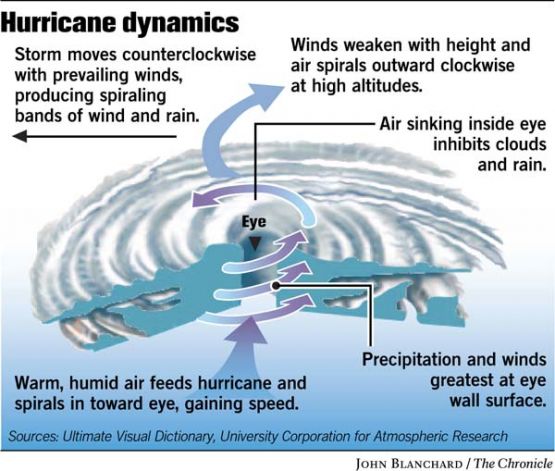
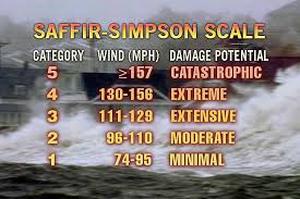
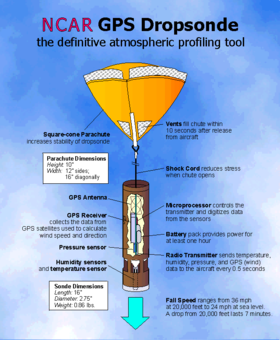
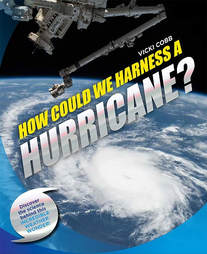


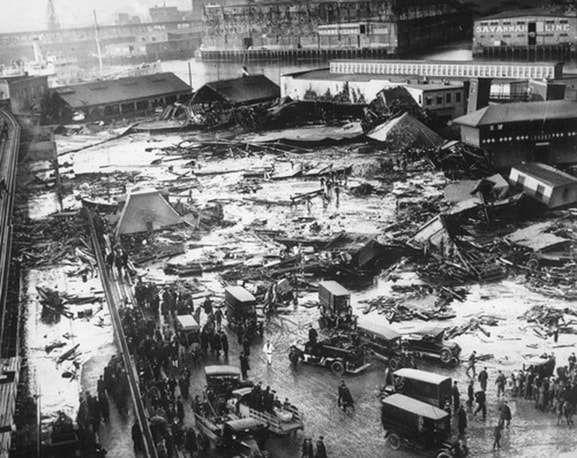
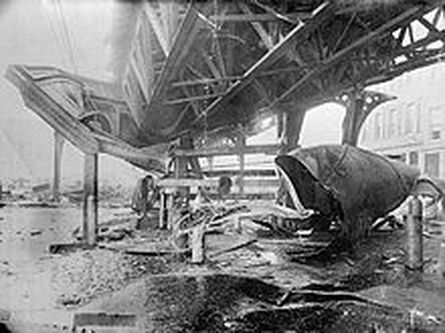
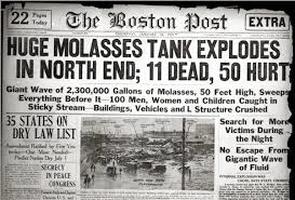


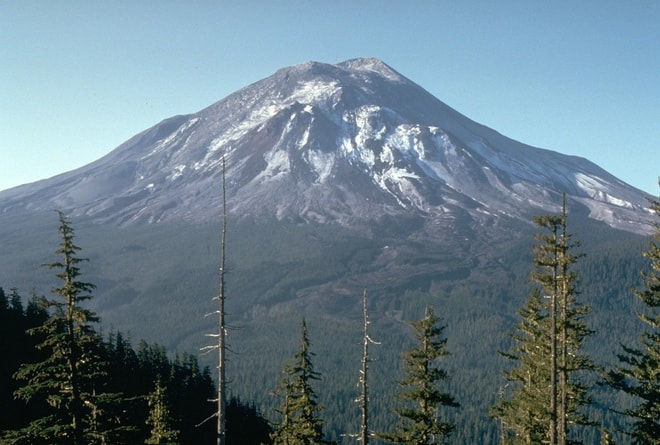
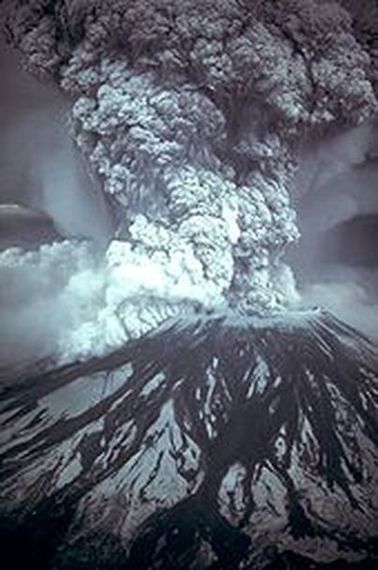
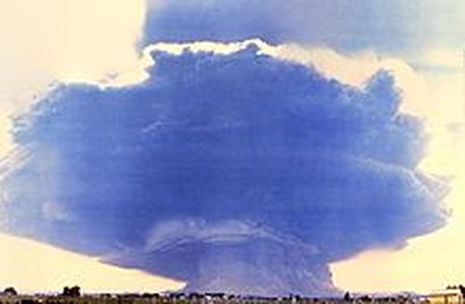


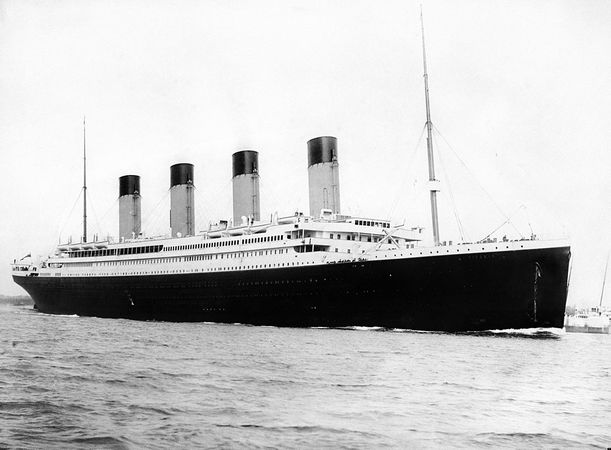
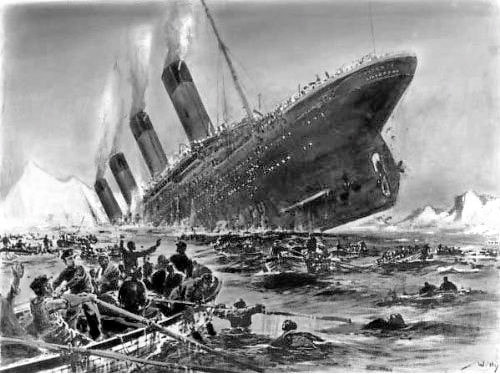
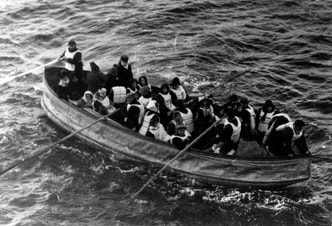
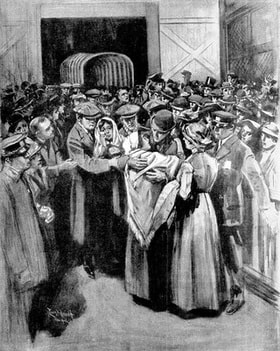


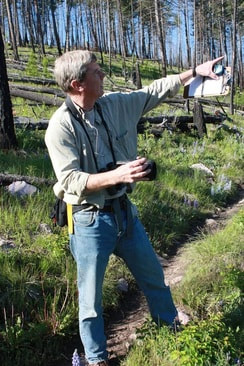
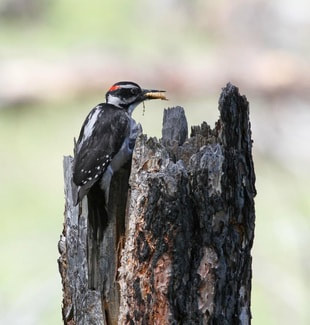
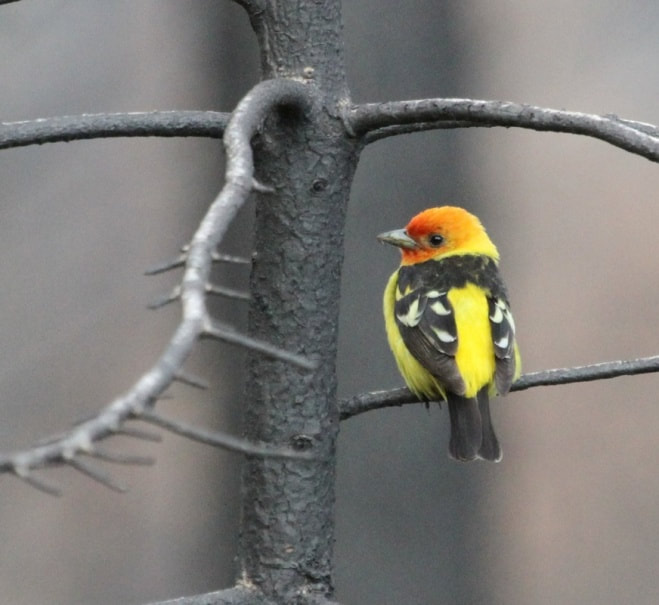
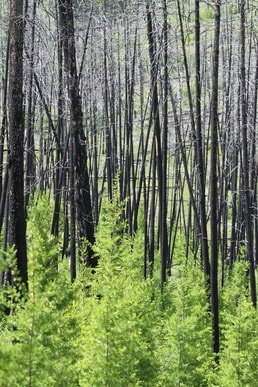

 RSS Feed
RSS Feed
